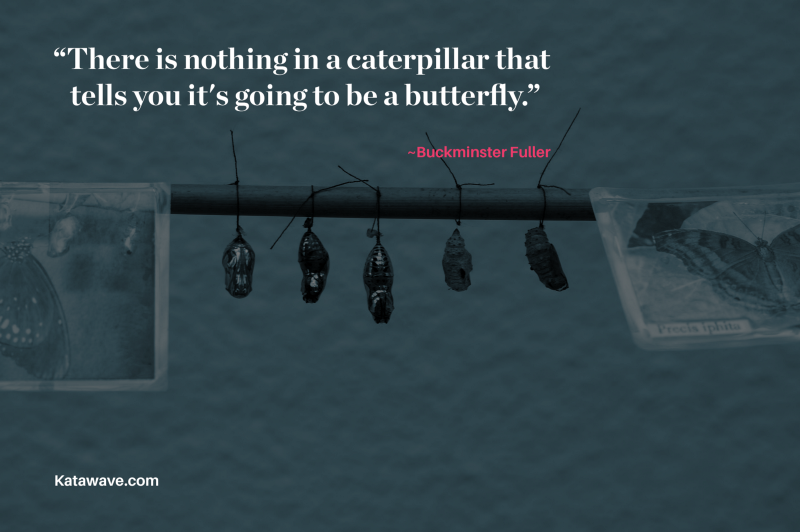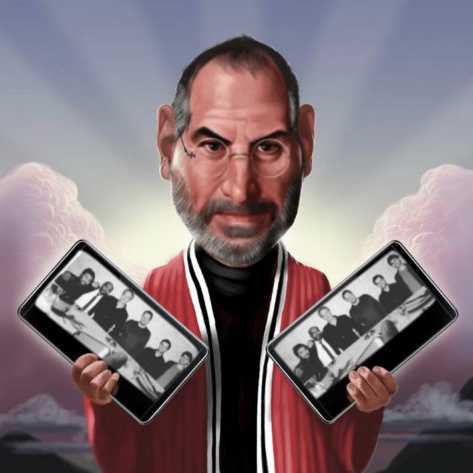Steve Jobs Didn’t Invent the iPhone — But He Did Make it Happen
"It is said that a farmer does not make his crops grow, he cultivates the soil to enable crops to grow"
The Genius with a Thousand Helpers
In his seminal work Good to Great, Jim Collins discusses a leadership technique he calls “A genius with a thousand helpers.” As the name suggests this type of leader is excellent at their job, but dictates every move of the company.
Yes, this leader may be excellent, but by making all the decisions she denies the company leaders the opportunity to grow. In addition, when this leader moves on she leaves a huge void in experience and makes it near impossible for a successor to succeed.
When you think of a company like Apple, it is inextricably linked with the genius with a thousand helpers, Steve Jobs.
Steve Jobs did not Invent the iPhone
Brian Merchant, author of The One Device: The Secret History of the iPhone debunks the myth that Steve Jobs was the genius who dreamt up the iPhone. In his brilliant work, he uncovers every element of the most impactful invention of our generation.
The Front Stage Story — A Master Storyteller
Jobs was a master storyteller. He had the credibility, eccentricity and ability to deliver a streamlined, brilliant story. He had audiences in the palm of his hand. He had the press queuing up to talk to him.
He fronted the company and this added to the story that he was the genius within Apple.
He ensured the message behind every product focussed on benefits and not features. Take the iPod for example, not 1GB of memory, but 1,000 songs in your pocket. 1GB means very little to the layman, 1,000 songs in your pocket cannot be mistaken. He ensured this was the story told at every opportunity, he ensured the Headlines wrote themselves.
Brian Merchant tells us that he (in)famously told celebrated journalist Walt Mossberg that he had this idea of a gesture controlled phone and then asked his engineer to make it. As Merchant uncovers through a series of on and off the record interviews, this was not true.
The real story is just that, real. It is human. It is messy. It makes sense.
The Back Stage Story

“There is nothing in a caterpillar that tells you it’s going to be a butterfly.” — Buckminster Fuller
My kids are sometimes reluctant to try something new because they are afraid they won’t succeed. I remind them how we all learned to walk, we fell, we fell again and we kept falling until we walked.
Innovation is the same thing. It has to begin somewhere.
The iPhone started in a similar vein.
While Merchant recounts the story in detail and accredits the true innovators behind the iPhone, this article is more about the principle which made it happen. Importantly, we should recognise the real genius of Jobs also.
Through the book we learn that a group of like-minded individuals had some interest in doing much more than simply working on the Macs.
This team gained access to an abandoned 1990’s user testing lab. In this lab they hacked together a plethora of existing technologies and made an ugly straw man of multitouch device. It is important to recognise Wayne Westerman, an engineering Ph.D. who developed multitouch in a product called FingerWorks to overcome his difficulty in typing because of repetitive strain syndrome. This team happened upon this device and built on it. (Apple acquired Fingerworks and Westerman along with it).
Once they had something to show, they brought it to Scott Forstall and Jonny Ive, senior executives and people who had Jobs’ ear.
We are told Jobs was initially apathetic about the work until was developed further. However, once he realised it’s potential he did everything to bring it to life. Yes he “owned” it by controlling the front stage story. Even though he more than inferred that he came up with it, this all added to the story. The public, press and shareholders lapped it up.
Farmer Jobs
As I opened this week’s Thursday Thought: It is said that a farmer does not make his crops grow, he cultivates the soil to enable crops to grow. Once Jobs grasped the talent and the potential in this team of mavericks, he backed them 100%.
This is a key element to any leadership role. When you do realise the talent you set it free, you give them time to experiment, to fail (to walk, fall, fall, walk, run).
Jobs gave permission to Forstall and his deputies to pluck the brightest and the best to assemble a crack team to work on the iPhone.
The high level of secrecy all added to the legend. Being asked was to be invited behind the curtain, to be part of a secret club (although some Apple execs claim this was just Jobs’ paranoia.)
Lessons for Business and Leadership
The current buzzword in business today is transformation, accompanied by Big Data, Digital, Innovation and a few other similar such words.
The current trend is to go all out and create a digital/innovation lab. Often, in fact mostly, such initiatives fail.
Why?
Without a company-wide bought-into, agreed-upon North Star most innovation initiatives are orphaned from any bigger direction. Most experiments, even as we saw with Apple’s iPhone were orphan projects. Yes, this succeeded, but only because of Jobs’ vision.
I am not one for listicles, but here is a concise list of requirements:
A North Star
This is a unifying meaning and purpose that acts as a beacon for any company. Any company activities should align to this. Once in place, all experiments can be measured off this. This would have made the work by the original iPhone maverick group easier to get condoned and blessed.
Collaboration
Once a North Star is established, leaders need to enable and encourage collaboration through the sharing of information, knowledge and best practices.
A Curious and Growth Mindset
This is a people thing. This takes real skill to hire such people, unfortunately, due to a poor education system, which celebrates collection of knowledge over collection of knowledge times experience such people are rare.
A Culture of Creativity
When you understand that Jobs fast tracked innovation when he saw it, you have to admire that. I don’t know if there was such a culture in Apple at the time, but the team that sparked the process should be emulated and encouraged and rewarded. (I feel this was the sacrifice they made for the bigger story, they sacrificed their acknowledgment and this is important for so many of us often more than monetary gain.)
Bravery
Leading this way takes bravery. It is hard for companies to give bandwidth to senior executives to focus on the future of the company when they are so busy in the present. This takes bravery, the leader needs to manage the board and middle management and just make this happen. By having a company-wide North Star it makes the rest of the company understand an innovation team are in flow with the rest of the company and so they are enabled and not blocked.
A Helper with a Thousand Geniuses
Finally and often overlooked is that the genius usually does lie within your company. It is just not nurtured, it has nowhere to prosper. If anything the iPhone story tells us this. The company was awash with genius and once Jobs recognised it he cultivated the soil so it could flourish. Leaders should be chief helpers and nurture success rather than claim it.
So, I conclude, Jobs may not have shown genius in inventing the iPhone, but he sure showed genius in bringing it to life.
Thank you for Reading, please hit a like so others may see this.
(Katawave works with organisations to create meaningful and resonant North Stars. We make sense of an often uncertain future. Once in place, we provide strategic architecture and realisation, all the time in alignment with a company-wide North Star. More posts like this here.)
On this week’s Innovation Show I speak to Brian Merchant, we get to recognise the team behind The One Device: Bas Ording, Imran Chaudhri, Greg Christie, Brian Huppi, Josh Strickon, Scott Herz, Richard Williamson, Nitin Ganatra, Andy Grignon, Kim Vorrath, David Tupman, Michael Culbert, Wayne Westerman, Freddy Anzures, Marcel Von Os, Mike Matas, Steve LeMay, Jonny Ive, Tony Fadell, Scott Forstall and of course: Steve Jobs (I am sure I am missing many others).
